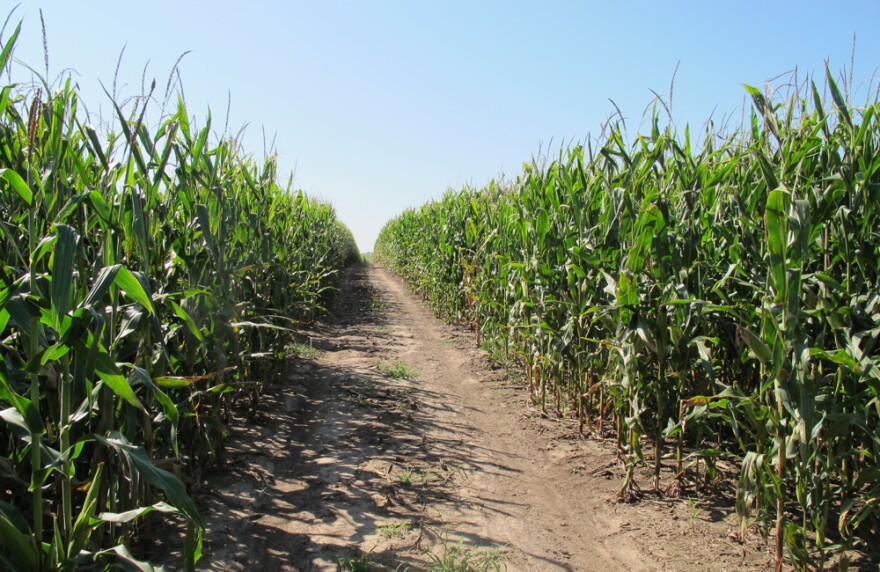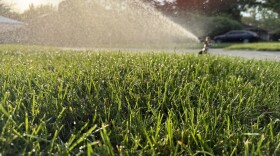Nitrates, fecal bacteria, sediment and other pollutants in the Des Moines and Raccoon rivers threaten safe drinking water for 20% of the state’s population. That's one of the findings from a sweeping study commissioned by Polk County supervisors in 2023 and released Tuesday.
Matt McCoy, Polk County Board of Supervisors chair, said the goal was to “provide a comprehensive, unbiased analysis of water quality” in the rivers, which converge in Des Moines and eventually drain into the Mississippi River.
The report also recommends regional and state-level actions, including:
- More state funding for wastewater treatment upgrades in the two watersheds.
- Creating a comprehensive water monitoring and modeling program for the watersheds and linking it to a public communications tool.
- Researching technologies and practices that reduce manure’s impact on source water quality.
- Building on partnerships to scale up best agricultural practices in the watersheds to reduce erosion and nutrient loss.

“The cost of addressing these problems is enormous, but the consequences of not addressing them is not an option,” McCoy said at the supervisors’ meeting Tuesday.
Sixteen scientists from Iowa and across the country contributed to the Central Iowa Source Water Research Assessment (CISWRA). It’s grouped around four topics: drinking water security, recreation, stream flow and ecological health and habitat.
The executive summary said “pavement-filled cities” contribute to impaired waters, but “agricultural production, which is the predominant use of the land in our watersheds, has an overwhelming influence on the rivers.”
Fertilizer and manure that washes off farm fields threaten drinking water sources and increase the likelihood of harmful algal blooms, the authors said. Historical alterations to rivers and streams, like channel straightening and more extreme weather from climate change, also contribute to water quality challenges.
“The problems identified in this report are not new to the stakeholders in Polk County, but this report is timely, given the existing conversations around the high levels of nitrates that this community is dealing with currently,” McCoy said.

Since June 12, the Des Moines area has been under its first lawn watering ban due to elevated nitrate levels in the Raccoon and Des Moines rivers.
Central Iowa Water Works officials said compliance has cut water demand by more than 30%, allowing the regional water utility to keep pace with nitrate removal and stay under the federal threshold of 10 milligrams per liter (mg/L) for public drinking water.
The standard was set decades ago to prevent blue baby syndrome, a life-threatening condition that causes low oxygen levels in an infant’s blood. But a growing number of studies have linked nitrate concentrations lower than 10 mg/L to colorectal cancer, thyroid disease and other health issues.
The CISWRA researchers found around 40% of the nitrogen in the Raccoon and Des Moines rivers comes from farm fertilizer. Roughly 20% stems from manure, while 20% comes from nitrogen-fixing crops, predominantly soybeans.
Around 18% comes from atmospheric deposition, a process where nitrogen falls back to the earth with rain and snow or as particles. Just 2% comes from developed land and water that flows out of sewage treatment plants.
The summary report states that "nitrate levels in central Iowa are among the highest in the nation,” even when compared to other agriculturally intense regions.

A pivotal moment
The 10 people who gave public comments at the Polk County supervisors' meeting said this is a pivotal time for water quality.
“It doesn’t have to be this way,” said Mike Tramontina, a Des Moines resident representing the Iowa Chapter of the Sierra Club. “Our rivers can be cleaned up. The Des Moines and the Raccoon can be brought back to drinkable, swimmable and fishable quality and by natural processes.”
Tramontina said politicians too often resist solutions over concerns that they could harm farmers.
“I hope that in all future discussions, every time you hear someone say, ‘What about the farmers?’ I hope one of you will turn and say, ‘What about the babies?’” Tramontina said, referring to nitrates and blue baby syndrome.

Tramontina and others, including Michael Schmidt, general counsel of the Iowa Environmental Council, criticized the state’s Nutrient Reduction Strategy. They said it has not made significant progress in improving water quality since it was released in 2013.
Schmidt said many individuals are voluntarily adopting conservation practices, but larger-scale changes are needed to protect the state’s water.
“If you look below the surface, which is hard to do in most Iowa Lakes, you can see that the problem is not just a drought or wet weather, it's what people are putting on the land upstream,” Schmidt said.
He said several of the new report's recommendations — comprehensive watershed planning, clear benchmarks for progress, funding for additional water monitoring and improved manure management practices — will be key to protecting public and environmental health.

Matt Russell, interim executive director of the Iowa Farmers Union, delivered a written statement from Aaron Lehman, IFU’s president.
“We all know that agriculture is contributing to our water quality challenges in Iowa. The good news is that means farmers can be an important part of solving this problem,” Lehman wrote.
As millions of dollars of federal conservation funding has been cut or frozen under the Trump administration, Lehman's statement said that IFU looks forward to working with Polk County and other partners to scale up best practices for water quality.
Polk County's efforts to improve water quality
McCoy emphasized that solutions are within grasp if urban and rural Iowa work cooperatively.
“The work that Polk County has engaged in under the direction and leadership of Jonathan Swanson highlight some of the best practices if implemented statewide, which would have enormous benefits in these watersheds,” McCoy said.
“For us, making a difference has come through diversified approaches to putting conservation on the ground."Jonathan Swanson, water resources supervisor with Polk County Public Works
Jonathan Swanson, water resources supervisor with Polk County Public Works, highlighted the batch and build program his team developed. It aims to reduce barriers for neighboring landowners to add saturated buffers and bioreactors to treat field tile drainage before it empties into ditches and streams. He said the program has scaled up to 13 counties in Iowa and other Midwestern states.
Other programs focus on installing wetlands — which naturally filter water, store stormwater and create wildlife habitat — adding cover crops and restoring streams.
With a large urban population, Swanson said the county also faces its own “distinctly urban difficulties,” like stormwater runoff. The Rain Campaign offers resources to help residents add rain barrels, permeable pavement and certain types of landscaping to prevent runoff.
“For us, making a difference has come through diversified approaches to putting conservation on the ground,” Swanson said.
Swanson said his team is eager to dig into the new CISWRA report to see how they can do more to improve water quality in central Iowa.




